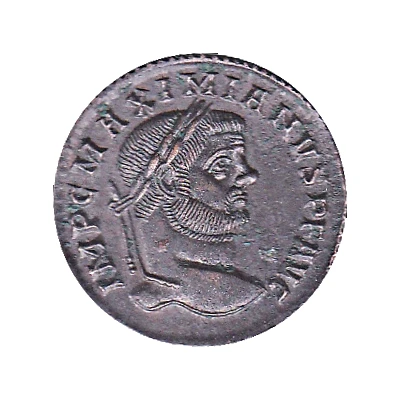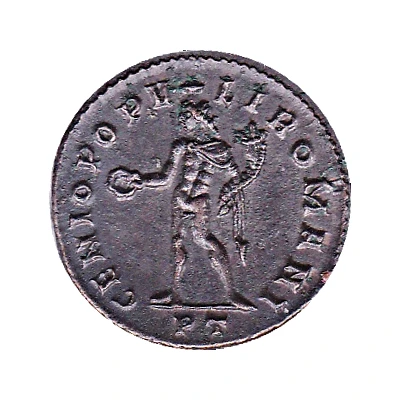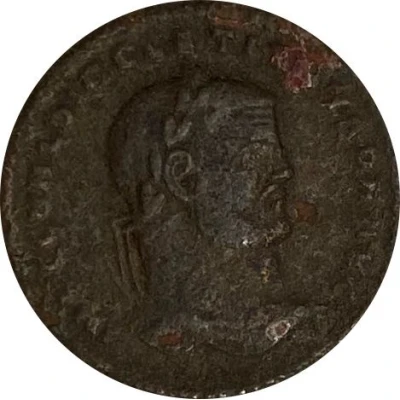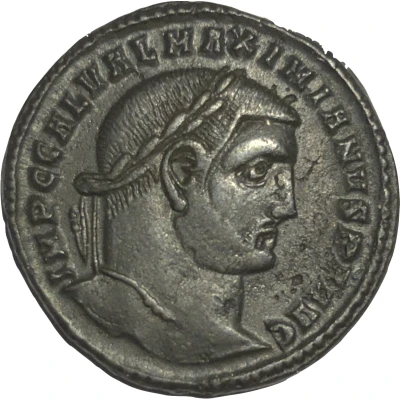
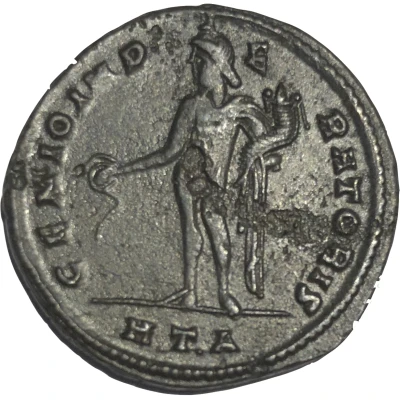

Follis - Maximianus GENIO IMPERATORIS; Heraclea
| Bronze | 6.34 g | 29 mm |
| Issuer | Rome › Roman Empire (27 BC - 395 AD) |
|---|---|
| Emperor | Maximian Herculius (Marcus Aurelius Valerius Maximianus) (286-305) |
| Type | Standard circulation coin |
| Years | 286-305 |
| Value | Nummus / Follis (¼) |
| Currency | Argenteus, Reform of Diocletian (AD 293/301 – 310/324) |
| Composition | Bronze |
| Weight | 6.34 g |
| Diameter | 29 mm |
| Shape | Round (irregular) |
| Technique | Hammered |
| Orientation | Coin alignment ↑↓ |
| Demonetized | Yes |
| Updated | 2024-10-05 |
| Numista | N#224068 |
|---|---|
| Rarity index | 86% |
Reverse
Script: Latin
Lettering:
GENIO IMPERATORIS
HTA
Interesting fact
The Follis coin featuring Maximianus (GENIO IMPERATORIS; Heraclea) was part of a large-scale currency reform implemented by the Roman Empire during the 3rd century AD. The reform aimed to address inflation and restore confidence in the Roman currency by introducing new denominations and standardizing coin designs. The Follis coin, which was made of bronze and weighed 6.34 grams, was one of the new denominations introduced during this period. It was used extensively throughout the empire for everyday transactions and played an important role in facilitating trade and commerce during that time.
